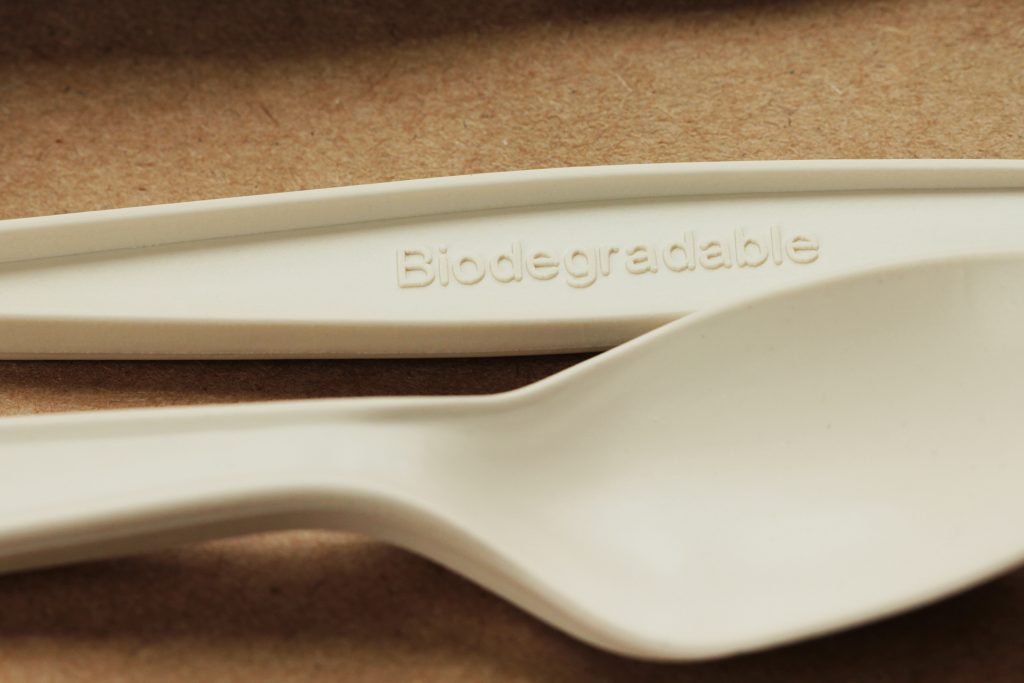The Short Guide to Biodegradable Plastics
Bt Alex Mardikian
Do you know that it is possible to manufacture biodegradable plastics from fossil fuels? Plastics are a serious pollution problem not just for land but for our oceans as well. Biodegradable plastics attempt to fulfill two objectives, natural degradation and quick degradation.
Biodegradable plastics can also be produced from organic materials. Biodegradable plastics are expected to undergo natural degradation through the action of microbes and break down into harmless materials such as water and carbon dioxide.
Not all biodegradable plastics are compostable. The ones that are, degrade to form humus.
ASTM, which is a global standards group, has established specifications for biodegradable and compostable materials both on land and marine environment.
Plastic manufactured from plants are known as bio-based plastic. These are usually made from two materials – biomass and polyester obtained from plants. The polyester is further divided into polylactide acid (PLA) and polyhydroxyalkanoate (PHA).
PHA is bacterial in origin and is also produced by genetically modified organisms (GMO) plants. In future, it could be produced from waste food.
Polyhydroxybutyrate (PHB) is one type of PHA that is gaining wide acceptance. PHA is used for wrapping food products, in the manufacture of cups, plates, and also for manufacturing sutures, and gauze. This plastic biodegrades completely. It is compostable and should ideally be placed in soil containing microbes and fungi. PHA degrades slowly in a marine environment as compared to backyards where it can degrade in as little as 2 months.
Polylactide Acid (PLA) is manufactured by a fermentation process initiated by bacterial cultures. Lactic acid is easily produced. The trick lies in polymerizing or joining these molecules of lactic acid to produce PLA. PLA is relatively cheaper to produce as compared to PHA.
However, PLA is not as strong as PHA and therefore it does not find as many applications as PHA. PLA can be used for grocery bags, bottles, cups, packaging materials, and plates. It decomposes easily in the presence of acids. It is not easy to compost PLA in backyards, because the amount of water and temperature conditions required are not available naturally. PLA can take up to 12 months to decompose in soil. When PLA decomposes in the presence of oxygen, it releases carbon dioxide and water. However, in the absence of oxygen the decomposition of PLA releases methane. It does not decompose in our oceans, and hence should not find its way into marine waters.
Biomass based biodegradable plastics are made from cellulose acetate, a substance obtained from wood cellulose and crop waste. It finds used in the manufacture of solid plastics, cigarette filters, and coatings. Cellophane is a commonly used biodegradable film that is made from cellulose. Cellulose acetate-based plastics degrade up to 70% by weight over one and half years.
Starch obtained from starchy vegetables and crops such as wheat, potato, and cassava is treated with heat and water to produce a thermoplastic. Starch also finds use as an additive to bio-based and conventional plastic to improve and increase their biodegradability. Plastic made from starch can be made compostable or surely biodegradable. Compostable varieties can degrade completely in 90 days. Biodegradable varieties take more than 3 months to degrade up to 50%. Complete degradation may take up to 2 years.
It may come as a surprise to some, but it is possible to make biodegradable plastics from fossil fuels. Polybutylene Succinate (PBS), Polycaprolactone (PCL), Polybutyrate Adipate Terephthalate (PBAT) and Polyvinyl Alcohol (PVOH/PVA) are examples of such plastics.
PBAT is made from fossil fuel derivatives. Researchers are testing options that will allow the production of this polymer from renewable sources. This polymer could become a biodegradable alternative for LDPE and HDPE. If that happens and the use of this polymer gains currency, then we could see garbage bags and disposable packaging be manufactured from PBAT. This plastic is biodegradable as well as compostable.
PCL is a plastic with a number of specialty uses. It finds applications in the manufacture of surface coatings, adhesives, and stiffeners for orthopedic splints. It degrades very fast, and in the presence of yeast it can degrade completely in less than a month.

